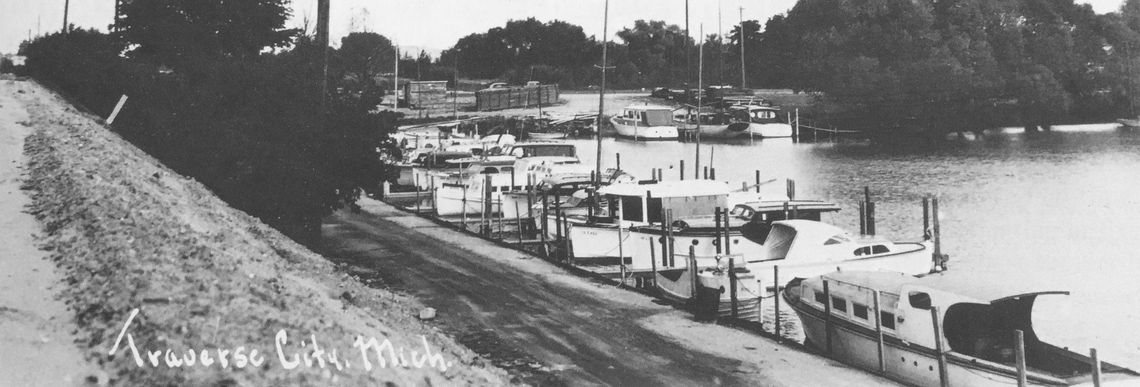The following is an excerpt from “Meet Me At The Dock in Greilickville, Grand Traverse Bay” by author Kathleen Firestone.
Copies of her books are available at local book stores or directly from her.
On the morning of June 22, 1933, Vice President Rennie and three others headed by plane to Milwaukee, where Rennie planned to work on the permitting process of the new dock.
Their pontoon-equipped Stinson Junior monoplane took off from Traverse City and flew out over Lake Michigan. But a heavy fog appeared and hung above the water, making air travel almost impossible. About 33 miles south of South Manitou Island, pilot Jim Gillette attempted to land on open water. Misjudging the distance, Gillette hit the water so hard, the broken pontoons supported the small plane only briefly. The plane floated until sometime in the afternoon, while the men fashioned a raft of seat cushions and a gasoline can, for Charles Rennie Jr.’s wife.
They stripped to their underwear and tried to swim to shore, while pushing the raft, but one by one, the men slipped below the water. Charles Rennie lasted until the next morning, when exhaustion and cold water overtook him. Charles Rennie, pilot Gillette, and mechanic George Keller perished but had made Mrs. Rennie’s rescue possible.
The crew of Ann Arbor Carferry No. 7 sighted her on the raft and took the survivor to Kewaunee and then back to No. 7’s based at Frankfort.
Two months later the clothes of the lost men washed ashore on South Manitou Island.
*** Ferris J. (Pete) Rennie was the son of Charles Rennie, Jr. and Pete became president and general manager of Rennie Oil after his father died.
The Rennie Company also bought Darrow Marina, a watercraft dealership and repair shop located just north of Rennie and Burke docks. The marina had formerly been owned by Ray Darrow, whose ancestors had earlier built a dock and mill a few hundred feet south of the Leelanau County line, in Grand Traverse County. In the 1940s Traverse City officials wanted to own the Ray Darrow property out from Monroe Street, to use as parkland.
A deal was made whereby Darrow moved his operation to Greilickville, along the shore just south of Cherry Bend Road, and Traverse City removed the old Darrow Dock in Grand Traverse County, naming the property across the road “Darrow Park.”
The new Darrow Marina in Greilickville was adjacent to the earlier Greilick sawmill and Norris gristmill and tannery. Greilick’s old dock had stretched out from the spit of land known as “Greilick Point.”
Sadly, in 1965 Ferris (Pete) Rennie of Rennie Oil Company was lost while going across the ice with his gas-powered sled, headed to Rennie (Power) Island. Like his father Charles before him, Pete Rennie’s life ended in a water tragedy.
Also in ‘65, Socony-Vacuum was renamed Socony Mobil Oil Company. The trade name for Mobilgas had been shortened to Mobil in1963.
The Rennie Oil Dock became the longest-serving commercial marine facility in Leelanau County. With the changes at Socony, in 1965 Rennie Oil became a subsidiary of Leonard Oil , across the M-22 highway was a large tract of land for officer space and gasoline storage.
Leonard kept a grazing flock of sheep or goats for controlling the grass on the storage lot.
Around 1970 President Saboff of Leonard Oil authorized a sale of the dock, business, and property to Total Oil Company. For a time the local business was known as Total-Leonard.
Total-Leonard purchased a 1,600-foot containment boom in 1973, to be used in case a spill occurred from any ship arrive at the dock. The boom could surround a ship in last little as 10 minutes but, fortunately, was never needed except for practice drills.
With several name changes through the years, Marathon terminal became the last name under which petroleum products were received.








